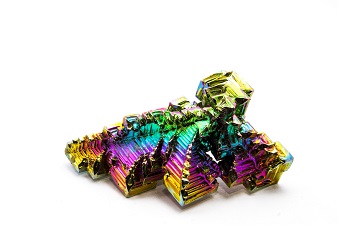More than a metal – a boost for bismuth through nanotechnology

Related topics
Innovation Leadership in enabling and industrial technologies Nanotechnologies France Germany Ireland Italy Portugal Spain United Kingdom Nanotechnologies, advanced materials, advanced manufacturing & processing, and biotechnology Colombia Mexicodate: 13/07/2015
Project: Functionalities of Bismuth based nanostr...
acronym: BISNANO
See also: CORDIS
Bismuth has many advantageous properties, some of which are already being exploited. For example, its non-toxicity makes it an attractive replacement for lead in some circumstances. Bismuth is discharged naturally from the human body and does not accumulate in the kidneys – unlike lead.
While these possibilities have led to a raft of studies on bismuth, few of them had looked into the metal’s chemical and physical properties at the nano-scale. The advent of nanotechnology has opened up new, unexplored possibilities on which the EU- and Mexican-funded BisNano project set its sights. The project brought together EU, Mexican and Colombian researchers.
Boosting the benefits of bismuth
Mexico is the world’s second-largest producer of bismuth after China. It is usually sold as raw material, but offers a very small profit margin in this form. To add value to the raw material, the BisNano team wanted to promote the metal and its compounds for a wider range of uses, including hi-tech applications. And they did just that.
The project team was able to create nanoparticles, thin films, nanoceramics and nanocomposites. Some of these were found to have interesting properties, particularly in visual and mechanical terms, says project coordinator Andreas Zeinert of the Université de Picardie Jules Verne.
For example, some of the nanoparticles were luminescent, making them an ideal candidate for the invisible ink used to protect against counterfeiting – the ink is only visible under a particular light. A Mexican company was very interested in the discovery and the know-how and technology has now been transferred.
An innovative fire retardant was another of the applications identified. By adding just a tiny quantity of bismuth nanoparticles to plastics, it is possible to increase fire resistance. An added advantage is that the smoke produced is non-toxic. The application is now being assessed for marketability by a Spanish company.
Further applications are in the pipeline and now require further research. The links between the different teams involved in BisNano are so strong that the partners are continuing to work together even though the public funding ended at the end of 2013.
Some 20% of the project’s person hours were spent assessing the safety of bismuth at the nano-scale. “This is very complex, and I wouldn’t pretend that all the questions were answered in three years,” says Zeinert. However, tests found that “most particles would not dramatically affect the vital functions of animals”.
Beyond science
These and other findings stemmed from collaboration between experts in very different fields, from the synthesis of nanostructured materials to those specialised in characterising microstructures and measuring physical and chemical properties.
“You cannot just do this with a few people, it’s much too complex,” says Zeinert.
As well as passing knowledge between disciplines and continents, BisNano was also able to pass knowledge to a new generation of scientists. In total, 26 PhD students participated in the project, some of them funded entirely by the project.
The project was also able to support several researcher exchanges and begin the creation of a network of researchers working on bismuth and nanotechnology. “This was very interesting from a cultural point of view. This has a social impact, which should not be neglected,” says Zeinert.
While the BisNano partners continue to investigate some of the potential applications identified during the project, a new EU-funded project is supporting researcher mobility for studies on photocatalytic materials. “We proposed this during BisNano as we identified materials that could be interesting for applications, but had no time to look into them. So BisNano is still bringing people closer together.”
